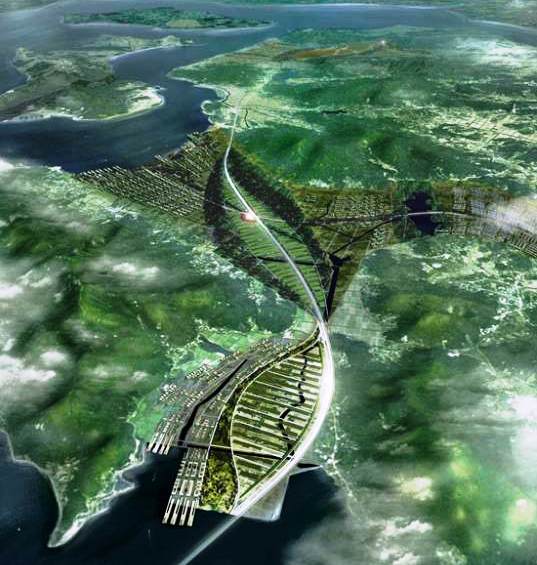South Korea is a nation that emerged from the aftermath of the Korean War in 1953 as one of the poorest in the world but rapid development and industrialisation since the 1980’s has seen it progress to be the world’s 15th largest economy in 2011. This is despite the fact that it is only a nation of 50 million people with limited natural resources.
However, with this prosperity come challenges; South Korea is also the 9th largest national user of fossil fuels and the world’s 9th largest emitter of greenhouse emissions, according to KEMCO (Korea Energy Management Corporation).
South Korea imports most of its raw materials for both energy production and its manufacturing industry. Currently, the majority of its electricity is sourced from a mix of imported coal, gas and nuclear fuel. At present, only 2.61 per cent of its energy is sourced from renewables, and this is because South Korea’s geography tends to be hilly, which is not suitable for wind, or highly urbanised, which is unsuitable for extensive PV deployment. Of the existing renewables, 70.9 per cent is from waste-to-energy facilities and 11.6 per cent from hydro power.
The Korean government and industry have seen “green growth” as an opportunity to improve resource management in the country and as a potential competitive advantage in export markets. Domestically, some of this progress can be already seen in the conversion of the Sudokwon Landfill site – located near Incheon, it’s the world’s largest at 20 million square meters – which is being utilised in a more sustainable way. Its waste landfill gases are captured powering a 50MW power station, its land has been reclaimed for an environmental theme park, 36 hole golf course, soccer fields and tennis courts; whilst its Environmental energy town will use solar, wind and waste-to-energy technologies for power generation.
Notably, Sudokwon will host the equestrian, golf and swimming events of the 2014 Incheon Asian games. Closer to Seoul in the former Nanji Island waste site, they have developed the Mapo Resource Recovery Plant which is sited on reclaimed landfill. Here they have built a highly efficient plant that each day converts the 650 tonnes of waste that is not able to be recycled into a fuel source for electricity generation and heating for 20,000 homes in the Mapo area of Seoul. Its modern design, high furnace temperature and effective scrubber technology minimise the release of toxic gases.
In export markets, they see opportunity in solar and automotive technologies. The solar industry has been challenging of late, due to polysilicon supply problems in 2008-09 and prices falling by as much as 50 per cent this year, but this has also meant that solar has become more competitive and potentially opened up new market opportunities to companies such as Hyundai Heavy Industries, which produces solar cells.
In the automotive sector, LG chemical currently has 25 per cent of the global battery market for EV’s and has sold 6GWh’s of battery storage to customers including GM, Hyundai, Volvo, Renault, SSangyong, FAW, Eaton and Ford. Hyundai-Kia has embraced “Blue Drive,” which covers the development of fuel efficient vehicles for conventional, biofuel, hybrid, all electric and hydrogen fuel cell powered vehicles.
The wind industry at the moment in South Korea is in its infancy, with 259 turbines installed for a total capacity of 420MW over dozens of wind farms with only 27 domestically sourced turbines making up 43.4MW of that total. In aggregate, these wind farms produce 860GWh per year or just .19 per cent of South Korea’s electricity consumption.
However, KETEP (Korea institute of Energy Technology Evaluation and Planning) has established a consortium of seven Korean technology providers with the aim of Korea becoming the third largest provider through the development of a 2.5GW offshore wind farm off Korea’s south west coast. The project will draw on the country’s significant experience in shipbuilding and construction as well as its past successes in automotive and electronics. Interestingly, KETEP sees the development of a 3.5GW wind farm as equivalent to a nuclear power plant.
To support the development of renewables, Korea has implemented its RPS (Renewable Power Standard) which is similar to Australia’s renewable energy target, but the target is for 11 per cent renewables by 2030 rather than 20 per cent by 2020. Although lower than Australia, it is still significant, given fewer readily available renewable options. This 11 per cent target is imposed on 13 large companies, essentially generators over 500MW and certificates can be freely traded. The RPS phases out the feed-in tariff on solar which is still expected to grow PV use from 276GWh in 2012 to an install of an accumulated 1.2GW by 2016.
Additionally, the scheme has different multipliers on technologies, with PV at 1.5, 0.5 for waste, 1.0 for hydro & biogas, 1.5 for wind, 2.0 for off-shore wind and 0.25 for IGCC (Integrated Gasification Combined Cycle). For liable entities, they will be able to borrow up to 30 per cent of their liability until 2014 and only 20 per cent after that but a penalty of 150 per cent of the market price applies for those that fail to meet their target. Expectations are that solar REC’s will trade at around 220,000 KRW (~$190AUD) and that non-solar REC’s will trade around 40,000 KRW (~$35 AUD).
Finally, it will be interesting to watch the development of these policies and technologies in light of Korea’s recent adoption of a national emissions trading scheme, commencing in 2015, which was supported by 148 of the 151 voting politicians when the legislation was passed.
Warwick Forster is Energy Markets Manager at Union Fenosa Wind Australia. He visited Korea as a guest of the Korean Trade Association (KOTRA)








